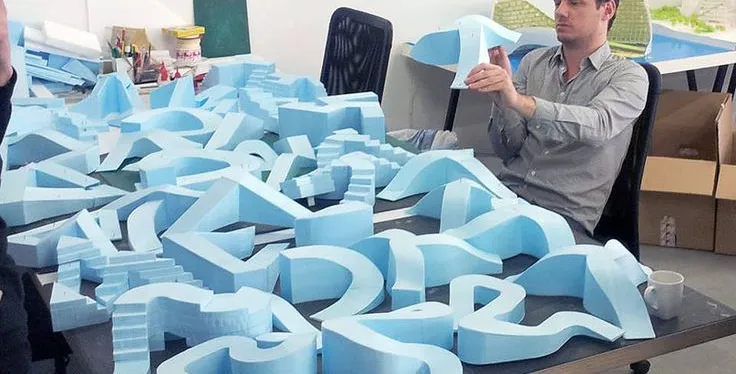Physical Modelling
Physical Model
A physical model is a three-dimensional, tangible representation of a design or system.
Designers love a good Physical Model
- Physical models are real, touchable versions of a design that help designers understand how an object will be used in real life.
- They are especially useful for testing ergonomics, internal structure, and aesthetics before making the final product.
- They let Designers do the following:
- Visualize information about the context.
- Scale down large objects or scale up smaller ones for easier visualization.
- Test aspects of a product against user requirements.
- Gather feedback to improve the design and product-user interface.

Why Designers Use Physical Models
- Ergonomics & Fit
- Helps check if the design is comfortable to hold or use.
- Ensures the product fits well with the human body (e.g., chairs, smartphones, tools).
- Example: A game controller prototype is tested to see if buttons are easy to press and the shape fits well in hand.
- Internal & External Relationships
- Shows how inside components affect the outside design.
- Helps place buttons, ports, and grips in the right spots.
- Example: A phone model helps designers decide where to put the charging port, speakers, and camera without making the phone uncomfortable to hold.
- Aesthetic Considerations
- Helps designers explore form, shape, color, and texture.
- Ensures the product looks appealing before final production.
- Example: A car model lets designers test how different colors or curves affect its appearance.
(you've probably heard this about Dyson a million times ... but just to make the point one more time ...)
James Dyson & the Importance of Physical Models
- James Dyson, the inventor of the Dyson vacuum, is famous for using physical models and prototypes to perfect his designs.
- 5,127 Prototypes – Dyson built and tested over 5,000 prototypes before creating his first bagless vacuum.
- Why so many? – Each physical model helped him refine suction power, airflow, and ergonomics until he got it right.
- Lesson: Testing and refining physical models is key to making a great final product!
- Key Takeaway: Physical models bring ideas to life, helping designers improve comfort, function, and appearance before mass production.
Scale Models - Simple Explanation
- A scale model is a smaller or larger version of a real object.
- It's used to study, test, or communicate a design without creating a full-size version.
Why Designers Use Scale Models
- Used in Architecture
- Helps architects show clients what a building will look like before construction.
- Demonstrates form, proportion, and functionality in a tangible way.
- Example: A miniature version of a skyscraper allows architects to study its shape and how it fits into the surrounding environment.
- Used in Testing
- Some designs are too big or expensive to test at full scale.
- Smaller models are tested under real conditions before finalizing the design.
- Example: Wind tunnel testing of aircraft uses scale models to check aerodynamics before building a full-sized plane.
- Used to Communicate Ideas
- Shows how a design will look and function before production.
- Useful for getting feedback from clients and team members.
- Example: Car manufacturers create scale models of new car designs to refine aesthetics and shape.
- Scale models save time and money by allowing designers to test and visualize designs before making full-sized versions.
- They are essential in architecture, product design, and engineering for refining ideas and ensuring success.

Aesthetic Models & Mock-ups - Simple Explanation
- An aesthetic model is a non-functional model.
- It's made to look and feel like the real product.
- It is used to test visual appeal and ergonomics but does not actually work.
- A mock-up, on the other hand, is a physical representation of a product.
- It has some functionality
- It's often used for user feedback and testing.
Why Designers Use Aesthetic Models
- Testing User Appeal
- Helps designers see if the product looks good and appeals to users.
- Used in ergonomic testing (e.g., how a product feels in hand).
- Example: A new smartphone model is created to check size, shape, and color before production.
- Evaluating Material Properties
- Weight & Balance
- Materials similar to the final product are used to test weight distribution.
- Example: A hand drill model can be tested to see if it is too heavy or well-balanced.
- Weight & Balance
- Texture & Surface Qualities
- Finishes, paint, or textures are applied to test how the surface feels and looks.
